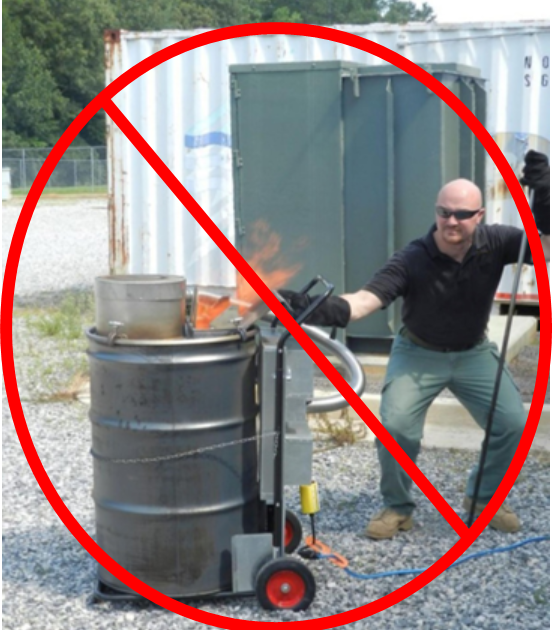Frequent Questions about Collected Household Medicines
On this page:
- Can household pharmaceuticals collected in a kiosk be burned at a crematorium?
- Can household pharmaceuticals collected in a kiosk be combusted by law enforcement in a burn barrel?
- Is law enforcement required to drive collected household pharmaceuticals to a permitted incinerator?
Can household pharmaceuticals collected in a kiosk be burned at a crematorium?
No. EPA has determined that the human body should not be considered “solid waste.” So, human crematoriums as well as animal crematoriums are not solid waste combustion units. As a result, crematoriums are not regulated under the Clean Air Act and typically do not use air pollution control devices to limit toxic air pollutants such as mercury and dioxins and furans. Crematoriums would not provide adequate public health and environmental protection when burning collected household pharmaceuticals. If solid wastes, such as collected household pharmaceuticals, are burned in a crematorium, it would make the crematorium subject to the Clean Air Act waste incineration regulations.
Can household pharmaceuticals collected in a kiosk be combusted by law enforcement in a burn barrel?
No, that would be considered open burning. Open burning of residential, commercial, institutional, or industrial solid waste is prohibited under the Resource Conservation and Recovery Act Subtitle D regulations in Title 40 of the Code of Federal Regulations section 257.3-7(a). Additionally, in many cases, state laws and local ordinances strictly limit or prohibit open burning of household waste.
Because emissions from open burning are generally not controlled, open burning of pharmaceuticals from take- back events may pose health risks to law enforcement officers and members of the surrounding communities. This is due to the potential formation, release, and exposure to pollutants formed as byproducts during open burning of the pharmaceuticals and their plastic, glass, multi-laminate films, and cardboard packaging. These pollutants, such as dioxins, furans, particulate matter, sulfur dioxide, lead, mercury, and hexachlorobenzene may cause immediate and long-term adverse health effects, such as cancer, respiratory illness, and reproductive disorders. It is also possible that barrels with fans (sometimes referred to as burn barrels), may pose similar risks from emissions. Also, given the comparatively low combustion temperature, and the difficulty in controlling the combustion temperature, it is not evident that open burning or burn barrels would achieve the Drug Enforcement Administration’s non-retrievable standard for the destruction of controlled substances. Read the memo dated September 11, 2018.

Is law enforcement required to drive collected household pharmaceuticals to a permitted incinerator?
Law enforcement agencies have the option of transporting collected household pharmaceuticals to a permitted incinerator. However, law enforcement representatives have expressed concern that the transportation of collected household pharmaceuticals to incinerators is expensive, especially in states where law enforcement may have to travel long distances to an incinerator. This concern stems from the fact this option requires law enforcement to have two officers drive the collected household pharmaceuticals to a permitted incinerator and witness their destruction. Although this method of transportation is available to law enforcement, it is not the only option available.
Instead of driving the collected household pharmaceuticals to a permitted incinerator, law enforcement can choose to ship the collected household pharmaceuticals in the liners placed into outer packaging and ship the package using a carrier such as UPS, FedEx, or the U.S. Postal Service. If law enforcement chooses this option, DEA regulations state that law enforcement should keep records, including the date of transfer and, if used, the identifying information of the unique identification number of the sealed inner liner, size of the sealed inner liner, and the name, address, and registration number of the DEA registered reverse distributor to which the package is shipped. When using a commercial carrier such as UPS or FedEx, several vendors sell receptacle liners and outer packaging systems that have been granted manufacture, mark, sell, and use special permits by Department of Transportation. Anyone, including law enforcement, that uses these receptacle liners and outer packaging systems is considered compliant with the DOT hazardous materials shipping standards. Additionally, when using the USPS as the carrier, law enforcement personnel are allowed to ship controlled substances to a DEA registered reverse distributor.
